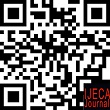Error Analysis in Using Inflectional Morphemes Students’ Recount Text of English Students
Abstract
Based on the explanation above, the researcher decides to conduct a research on inflectional morphemes errors in the recount text written by third semester students, this research is expected to identify of errors in using inflectional morphemes. So the researcher comes to the title “Error Analysis in Using Inflectional Morphemes Students’ Recount Text of English Students”. Based on definition above the researcher used a qualitative research because the researcher want to find out the types of errors in using inflectional morpheme in writing recount text of English students. The researcher taken one group of three groups of that English Department with consists of 30 students in a group. The study applied descriptive qualitative settled in collecting the case study that used to gain detail information concerning students’ error on inflectional morpheme in writing recount text. Based on the students writing recount text composition there are 106 errors. Based on the data, the writer classified the errors that occur into some categories as well: Addition, Omission, Misformation, and Misordering. The result of this research indicates that there are a number of errors made by third semester students of UHKBPNP English students in writing recount text using inflectional morpheme. Based on research finding, the researcher was concluded: “There are four types of errors commonly made by the students’ recount text using inflectional morpheme namely error of addition, omission, misformation, and misordering.
Keywords
Full Text:
DOWNLOAD [PDF]References
Abner, N., Namboodiripad, S., Spaepen, E., & Goldin-Meadow, S. (2021). Emergent morphology in child homesign: Evidence from number language. Language Learning and Development, 1–25.
Dewaele, J.-M. (2016). Why do so many bi-and multilinguals feel different when switching languages? International Journal of Multilingualism, 13(1), 92–105.
Dewi, N. I. M. P., Madia, I. M., & Matradewi, N. K. W. (2021). Error Analysis on The Use of Inflectional Morpheme in Student’s Writing of Bali State Polytechnic. Error Analysis on The Use of Inflectional Morpheme in Student’s Writing of Bali State Polytechnic, 81(1), 9.
Fernandez, L. (2017). Learning Another Language with Conceptual Tools: An Investigation of Gal’perin’s Concept-Oriented Instruction. University of Pittsburgh.
Guest, G., Namey, E., & Chen, M. (2020). A simple method to assess and report thematic saturation in qualitative research. PloS One, 15(5), e0232076.
Haerazi, H., Irawan, L. A., Suadiyatno, T., & Hidayatullah, H. (2020). Triggering Preservice Teachers’ Writing Skills through Genre-Based Instructional Model Viewed from Creativity. International Journal of Evaluation and Research in Education, 9(1), 234–244.
Hikmah, H. (2020). Analysis of Omission and Addition Errors Found in the Students’ English Texts. ELTICS: Journal of English Language Teaching and English Linguistics, 5(1).
Kharmilah, P., & Narius, D. (2019). Error analysis in writing discussion text made by students at English department of Universitas Negeri Padang. Journal of English Language Teaching, 8(3), 327–335.
Kolanchery, G. (2015). Analytical components of morphology in linguistics. Global English-Oriented Research Journal, 1(1), 161–166.
Krámský, J. (2019). The word as a linguistic unit. De Gruyter Mouton.
Kumala, B. P., Aimah, S., & Ifadah, M. (2018). An Analysis of Grammatical Errors on Students’ Writing. English Language and Literature International Conference (ELLiC) Proceedings, 2, 144–149.
Kusumawardhani, P. (2018). The Error Analysis of Derivational Morphology in EFL’s English Narrative Composition. International Journal of Language Education, 2(1), 22–30.
Kusumawati, F. P. (2015). Students’ Morphological Errors in Writing Recount Text at Muhammadiyah University of Metro. Premise: Journal of English Education and Applied Linguistics, 4(1).
Leminen, A., Smolka, E., Dunabeitia, J. A., & Pliatsikas, C. (2019). Morphological processing in the brain: The good (inflection), the bad (derivation) and the ugly (compounding). Cortex, 116, 4–44.
Levesque, K. C., Breadmore, H. L., & Deacon, S. H. (2021). How morphology impacts reading and spelling: Advancing the role of morphology in models of literacy development. Journal of Research in Reading, 44(1), 10–26.
Liamputtong, P. (2020). Qualitative research methods.
Mays, N., & Pope, C. (2020). Quality in qualitative research. Qualitative Research in Health Care, 211–233.
Muysken, P. (2020). Code-switching and grammatical theory. In The bilingualism reader (pp. 280–297). Routledge.
Nassaji, H. (2020). Good qualitative research. In Language Teaching Research (Vol. 24, Issue 4, pp. 427–431). SAGE Publications Sage UK: London, England.
Northey, M., McCutchen, D., & Sanders, E. A. (2016). Contributions of morphological skill to children’s essay writing. Reading and Writing, 29(1), 47–68.
Purba, Y. O., Fadhilaturrahmi, F., Purba, J. T., & Siahaan, K. W. A. (2021). Teknik Uji Instrumen Penelitian Pendidikan. https://repository.penerbitwidina.com/publications/349518/teknik-uji-instrumen-penelitian-pendidikan
Purwanti, Y. (2020). An Analysis on the Use of Derivational and Inflectional Morphemes in English Song Lyrics on Maher Zain’s “Forgive Me” Album. Channing: Journal of English Language Education and Literature, 5(2), 57–62.
Romano, F. (2019). Grammatical accuracy in EAP writing. Journal of English for Academic Purposes, 41, 100773.
Sari, D. M. M. (2019). An error analysis on student’s translation text. Eralingua: Jurnal Pendidikan Bahasa Asing Dan Sastra, 3(2).
Scharenborg, O., & van Os, M. (2019). Why listening in background noise is harder in a non-native language than in a native language: A review. Speech Communication, 108, 53–64.
Siddiqui, K. A. (2020). Analyzing Factors Influencing the Paragraph Organization in English Language Writing of Intermediate Students. International Journal of Teaching and Learning in Higher Education, 32(1), 99–106.
Siregar, I. (2021). Analysis of Betawi Language Interference on the Morphology of Adolescent Speech in Jakarta. Journal of Humanities and Social Sciences Studies, 3(8), 54–60.
Tungkaburana, C. (2019). Demystifying English Simple Past Tense: A Thai Teachers’ Guide to Teaching English Simple Past Tense to Thai Adult Learners.
YUSUF, Y. Q., MUSTAFA, F., & IQBAL, R. M. (2021). An inquiry into grammatical errors in writing committed by high achieving EFL students. International Journal of Language Studies, 15(2).
Zein, M. S. (2017). Elementary English education in Indonesia: Policy developments, current practices, and future prospects. English Today, 33(1), 53–59. https://doi.org/10.1017/S0266078416000407
Zein, S., Sukyadi, D., Hamied, F. A., & Lengkanawati, N. S. (2020). English language education in Indonesia: A review of research (2011–2019). Language Teaching, 53(4), 491–523. https://doi.org/10.1017/S0261444820000208
DOI: https://doi.org/10.31764/ijeca.v5i1.7783
Refbacks
- There are currently no refbacks.
Copyright (c) 2022 Leonita Maria Efipanias Manihuruk

This work is licensed under a Creative Commons Attribution-ShareAlike 4.0 International License.
IJECA (International Journal of Education and Curriculum Application) already indexed:










___________________________________________________________________
| |
____________________________________________________________________
IJECA Publisher Office:







.jpg)




